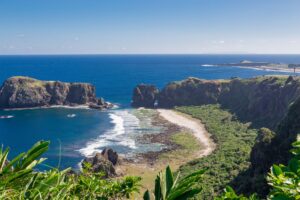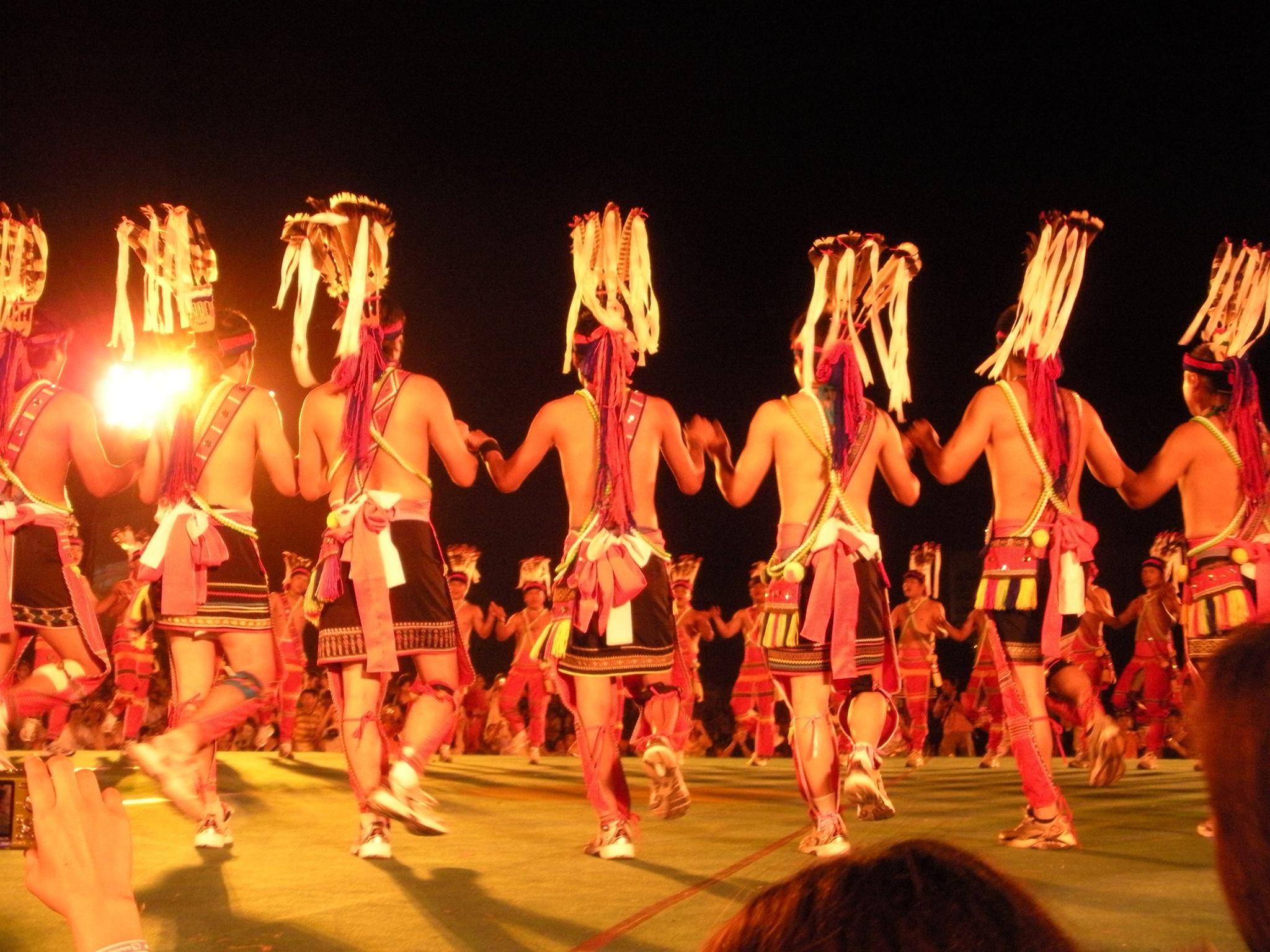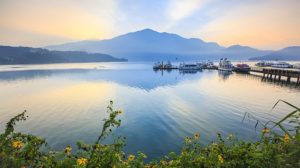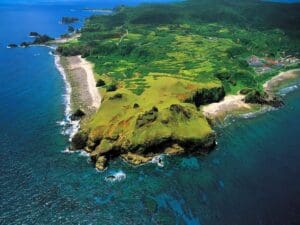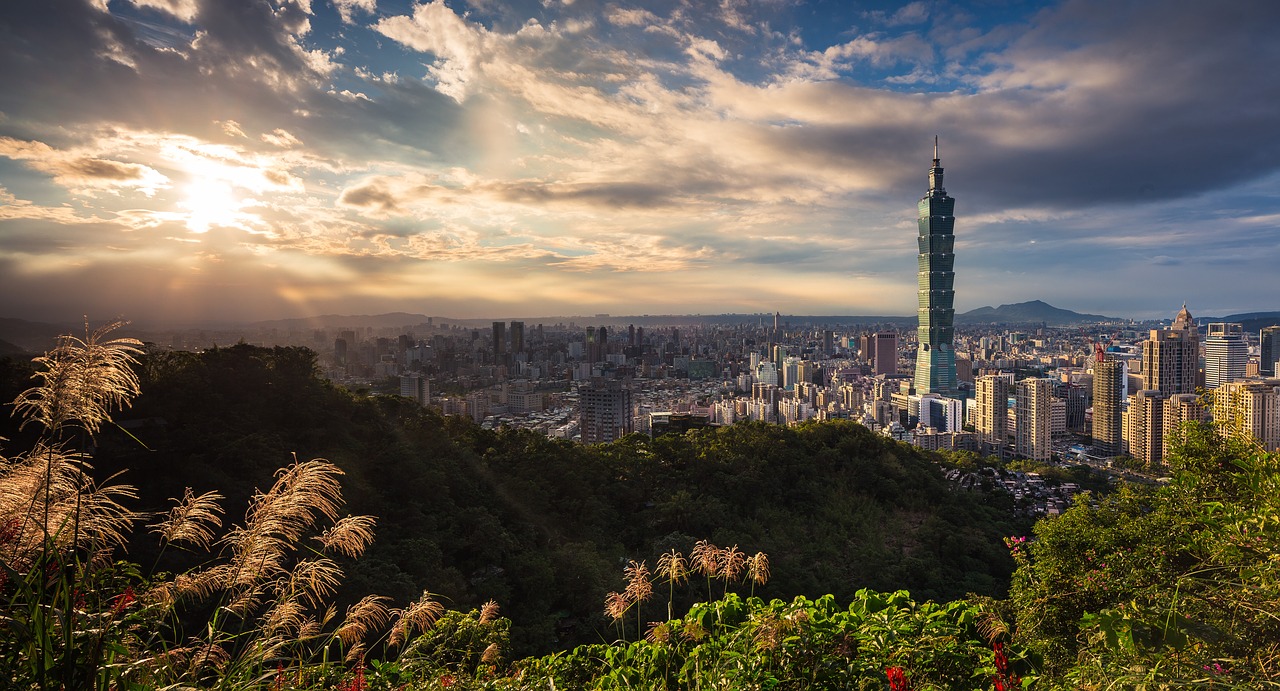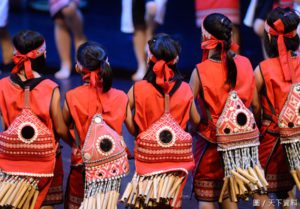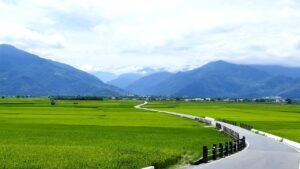short history
The origins of Taiwan’s indigenous peoples are not completely clear, but what is known is that they are part of the Austronesian language family, the most widely distributed language family in the world. One hypothesis says that the Austronesian peoples originated in Taiwan, and by boat spread out throughout the Pacific including Southeast Asia, New Zealand, the South Pacific and Polynesia. Currently, there are 16 recognized tribes: the Amis, Atayal, Bunun, Hla’alua, Kamalan (Kavalan), Kanakanavu, Paiwan, Puyuma, Rukai, Saisiyat (Saisiat), Sakizaya, Sediq, Thao, Truku (Taroko), Tsou and Yami (Tao). They number more than 500,000 or about 2% of Taiwan’s total population.
To hear traditional and contemporary indigenous music travel in the East Coast. Learn about the art of the facial tattooing or dyeing techniques or prepare and taste some indigenous meals, including rice in bamboo stalks, roasted wild boar and millet wine. Be part of a harvest festival, where, through an assortment of rituals, songs and dances, indigenous people thank their ancestors for a blessed year and pray for good weather and abundant harvests.
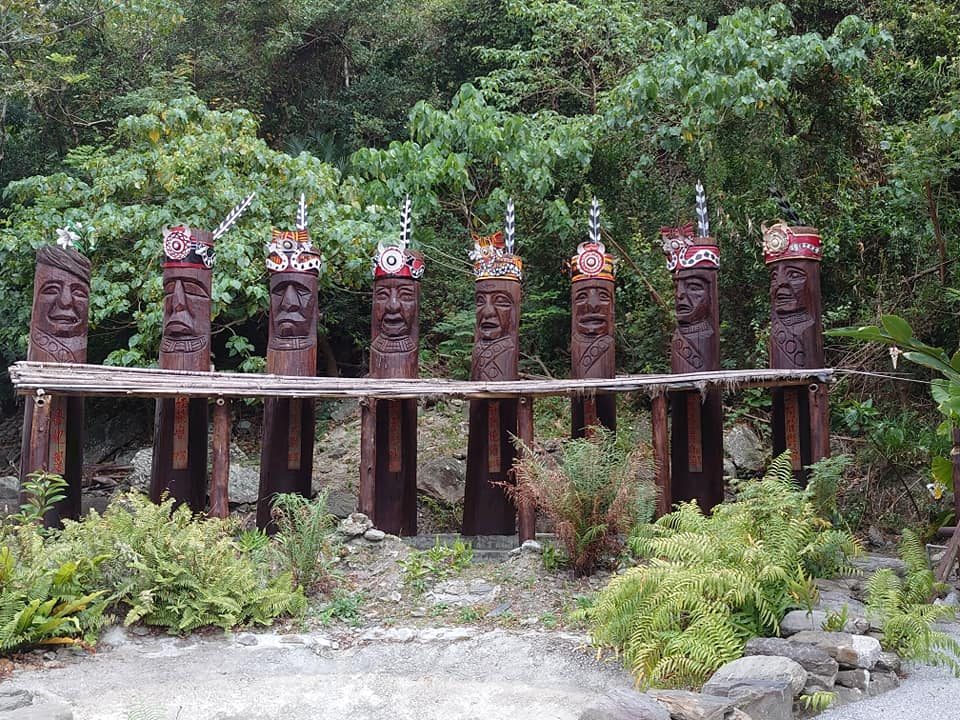
tribes
Amis Tribe
With a population of over 130,000, the Amis is the largest of Taiwan’s indigenous tribes, and is concentrated along the island’s East Coast. The tribe’s annual Harvest Festival, held in July and August, is one of the most accessible indigenous events for tourists. This was traditionally a matrilineal society with women in charge of household decisions. However, males oversaw the affairs of the village. Division of labor among the males was based on an age organization. Members of each level in the age organization were tasked with different responsibilities, the younger men were tasked with physical labor such as responding to emergencies, helping out with harvesting of the fields and defense of the community, while the older men served as teachers.
Atayal tribe
Bunun tribe
The Bunun tribe has a population of 50,000, mostly concentrated in high mountain areas in central, southern and eastern Taiwan. The Bunun are known for their excellent hunting skills. Each April they hold a ceremony called the Shooting Ear (referring to wild game) Festival , which allows young males to practice their hunting skills. This tribe was the first to develop a primitive calendar, using rope knots to mark the days and months and simplified icons to record major agricultural and hunting activities. The Bunun tribe is also well-known for its polyphonic singing of the Pasibutbut (“Prayer for an Abundant Millet Harvest). There are no words to this song, but rather several men form a tight circle, each one adding a sound based on nature such as the buzzing of insects or the sound of leaves blowing in the wind to create a unique harmony.
Bunun tribe
has a population of 50,000, mostly concentrated in high mountain areas in central, southern and eastern Taiwan. The Bunun are known for their excellent hunting skills. Each April they hold a ceremony called the Shooting Ear (referring to wild game) Festival, which allows young males to practice their hunting skills. This tribe was the first to develop a primitive calendar, using rope knots to mark the days and months and simplified icons to record major agricultural and hunting activities. The Bunun tribe is also well-known for its polyphonic singing of the Pasibutbut (“Prayer for an Abundant Millet Harvest). There are no words to this song, but rather several men form a tight circle, each one adding a sound based on nature such as the buzzing of insects or the sound of leaves blowing in the wind to create a unique harmony.
Hla’alua tribe
The Hla’alua, officially recognized in June of 2014, are thought to have once lived on Yushan (Jade Mountain). From there, they moved eastward and found a place inhabited by a people who were short in stature, referred to as the Kavurua . The Kavurua taught them how to farm, which allowed their population to increase and they migrated again, following the Laonong River to the mountainous Taoyuan District of Kaohsiung. Similar to the Kanakanavu, this tribe was once misclassified as southern Tsou. It has a population of more than 500. In 2003, one of this tribe’s major ceremonies, the Shell Deity Ceremony, was revived. The Kavarua are said to have given the Hla’alua 12 shells, each said to contain a different deity, such as for hunting, health and peace, etc., and taught them how to worship these deities.
Kamalan (Kavalan) Tribe
The Kamalan (Kavalan) is a Pingpu (meaning Plains Aborigine) tribe. This tribe originally inhabited the plains of northeastern Taiwan. But, during the 18th century, a large number of Han Chinese moved into that area and took control of tribal lands. The Kamalan tribe was forced to move to the Hualien and Taitung areas and their language and culture nearly disappeared due to intermixing with other indigenous tribes and intermarriage. This tribe currently has a population of over 1,100 mostly concentrated in Hualien County.
Kanakanavu tribe
The Kanakanavu, officially recognized in June of 2014, numbers more than 500, mostly concentrated in the mountainous Namaxia District of Greater Kaohsiung. The Kanakanavu were thought to have once lived along the upper reaches of the Beinan River in Taitung County, eventually moving westward to the Jianan Plains and then again along the Nanxixian River. The traditional territory of the Kanakanavu once stretched to near what is today the southern part of Alishan Township. They had friendly interactions with the Tsou, so much so that they were once misclassified as southern Tsou . One of this tribe’s most important ceremonies, the Kanaira, which means Appreciation for Harvest Ceremony, has been revived. According to one version of a Kanakanavu legend, a young man was walking in the forest and found a cave. As he approached,the entrance to the cave grew larger and larger. Someone appeared and led him inside, offering him food that he had never seen before such as millet and sweet potatoes. Then, he was given the materials and knowledge to plant them. This ceremony began to be performed to express appreciation for this help.
Paiwan tribe
Concentrated in southern and eastern Taiwan, the Paiwan tribe has a population of over 85,000. The Paiwan has a strict social hierarchy including the chieftain and clan, nobility and common class, in which commoners traditionally used their labor to plant and cultivate the fields and the upper managed the customs and ways of the society. Intricate motifs are seen on clothing, dwellings and artworks. Some motifs, such as human heads, human figures and hundred pace pit viper were for the exclusive use of the chieftain and nobility (sibling classes of the chieftain). The traditional dwellings of the Paiwan are made using large and small pieces of slate gathered from the nearby hillsides and cut by hand.
Puyuma tribe
The Puyuma tribe is concentrated in Taitung County, and has a population of more than 11,000. The Puyuma traditionally was a matrilineal society with women in charge of household decisions and ceremonies. Although small in comparison to other tribes on the East Coast, the Puyuma were well respected and feared due to a strict training system for the warriors of the tribe that started at an early age. The largest ceremony is the Annual Rites, which includes the Monkey Festival and Great Hunting Rites. These are centered on coming-of-age tests for Puyuma males. Other ceremonies exclusive to the women of the tribe, such as Mugamut (Women’s Weeding Ceremony), have also been revived.
Rukai tribe
The majority of the Rukai tribe’s more than 11,000 members live in the mountains of southern Taiwan, with significant numbers also living in Taitung County. The Rukai has a hierarchical society, including the noble class and common class. They traditionally lived in slate dwellings, a Few examples of which remain. The lily is important in Rukai culture. A man was allowed to wear a lily in his headdress during special ceremonies if he proved himself a good hunter. For a woman it was a sign of virtue.
Saisiyat (Saisiat) tribe
The Saisiyat (Saisiat) currently has a population of about 5,600 concentrated in the mountains of Miaoli and Hsinchu counties. The Saisiyat’s most important ceremony is the Dwarf Spirit Ceremony. According to tribal legend, a people who were described as short in stature with dark skin lived next to the Saisiyat. They taught the Saisiyat how to improve their agricultural techniques and their crops flourished. However, the males would often harass the Saisiyat women, infuriating the Saisiyat men. One day the Saisiyat men killed off all of these people except for an elderly couple who foretold of future crop failures. To appease their spirits, the surviving couple taught the Saisiyat the songs of the Dwarf Spirit Ceremony. This ceremony is held once every two years, over several successive nights.
Sakizaya tribe
On January 17, 2007, the Sakizaya became Taiwan’s 13th officially recognized indigenous tribe. The Sakizaya originally lived along the Hualien plains in eastern Taiwan, but were forced from their traditional lands due to disputes with and defeat by Chinese imperial forces in the 19th century. To escape further persecution during the Japanese occupation of Taiwan (1895-1945), the Sakizaya hid among the Amis tribe., for a long time, the Thus Sakizaya was considered a subgroup of the Amis. The Sakizaya is currently concentrated in Hualien County with a population estimated at between 5,000 and 10,000, but the current registered number is about 400.
Sediq tribe
The Sediq achieved recognition on April 23, 2008. This group was classified together with the Atayal during the time of Japanese rule over Taiwan (1895-1945). Their traditional lands lie along the border between Nantou and Hualien counties. Similar to the Truku and Atayal tribes, the Sediq practiced facial tattooing, which was a symbol of entering adulthood. The population of this tribe is estimated at 10,000.
Thao tribe
The Thao tribe is one of the smallest of the tribes numbering only about 600, and is concentrated around Sun Moon Lake in central Taiwan. According to tribal legend, it was a white deer that led the Thao’s ancestors to this lake from their original settlement near Alishan. Every family of the Thao has an “ancestral spirit basket” containing personal belongings of the deceased family members. The basket plays an important role in the lives of the Thao because it signals that the ancestors are never far away. In addition, any matter, large or small, cannot be undertaken unless the ancestral basket has been consulted. During the time of Japanese rule of Taiwan (1895-1945), performances of the traditional pestle music of this tribe were one of the top tourist draws in Taiwan.
Truku (Taroko) tribe
The Truku, proving the existence of a unique language and culture became Taiwan’s 12th officially recognized indigenous tribe in 2004. This tribe has a population of about 24,000, concentrated in Hualien. The Truku once lived in the spectacular Taroko Gorge, but were forced to move from their tribal lands by the Japanese, during their occupation of Taiwan (1895-1945). Today, a Truku communications path is a highway on which tourists from all over the world travel through Taroko National Park. Similar to the Atayal tribe, women worked hard to become excellent weavers and men fought bravely against their enemies to earn the right to tattoo their faces as a symbol of entering adulthood.
Tsou tribe
In the Alishan area, where the Tsou population of nearly 7,000 is mainly concentrated, there are two large communities, called “hosa”, and six smaller communities that branched off from the hosa. Within the hosa is a men’s meeting hall (kuba). This is where the males of the tribe discuss important matters relating to the government and economy of the tribe. It is also where they receive training in hunting and the history and traditions of the tribe. In addition, some ceremonies such as the Mayasvi (Warring Ceremony), are held at the kuba while others, such as Homeyaya (Millet Harvest Festival) are held at the spirit house of each clan.
Yami (Tao) tribe
The Yami live on Orchid Island off the Taitung coast, and have a population of about 3,500. Due to their environment, they have developed an intimate relationship with the ocean and are the only one of Taiwan’s tribes to make seafaring boats, which they use for fishing. The boat launching ceremony is one of the tribe’s most important traditions that continue to be practiced today. In addition, they built semi-submerged homes that provided protection against strong winds. Some examples of these traditional dwellings can still be seen on Orchid Island .
please note:
Before deciding to explore this kind of travel, please read:
In collaboration with Tribe Asia.
Written by Cheryl Robbins.
tours
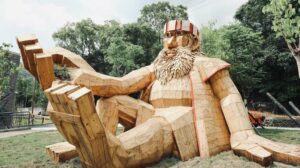
2 days | Indigenous tour from Taichung: Danda Bunun Community & SUN MOON LAKE
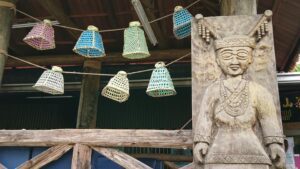
2 days | Indigenous tour from Taichung: Chashan Community & alishan
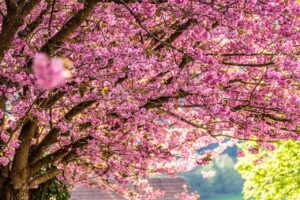
2 days: Sakura blossom in Alishan ( travelling off the beaten path )
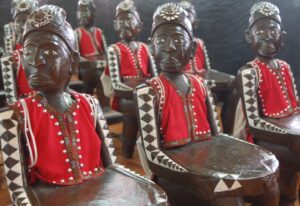
3 days | Indigenous tour from Taichung: Rinari & Shenshan Community
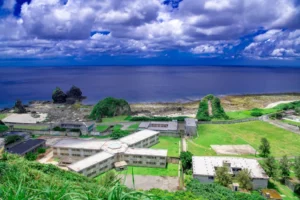
2 days | Green Island Dark Tour
